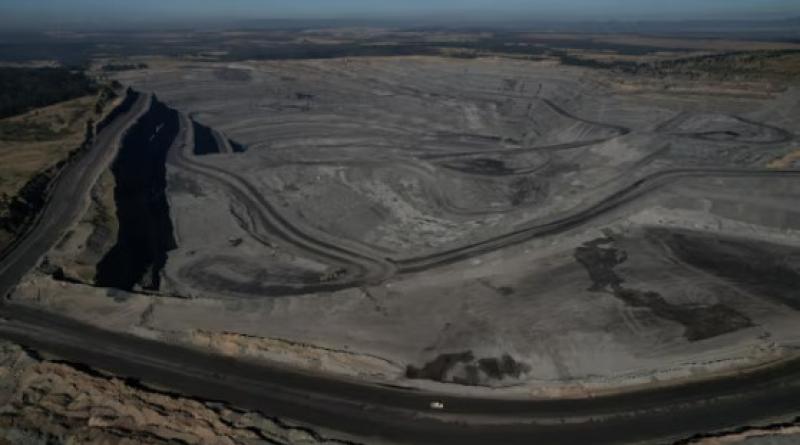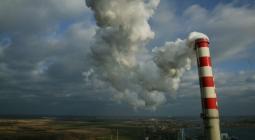Approving new coalmines while pledging climate action is an untenable position – and the Albanese government knows it

Being serious about limiting global heating to 1.5C doesn’t just mean investing in green energy, it means ensuring there are as few new mines as possible
Fifteen months into the life of the Albanese government, a pattern has emerged in how it deals with new and expanding coalmine developments.
Decisions to block mines are publicly announced. That was the case when Tanya Plibersek stopped the development of a central Queensland mine proposed by Clive Palmer, and cancelled two long-stalled proposals that were behind on their paperwork.
Decisions that mine developments can go ahead get a different treatment. The approval notice is posted on the federal environment department website and goes unnoticed until some keen-eyed observer posts it on social media.
There’s nothing particularly surprising or underhand about this. It is worth raising mainly because of what it suggests – that the government knows new coalmine approvals are a political problem.
Notably, no one in the government has called a press conference to argue these new developments are needed. The response from campaigners has been loud and to the point: it’s reckless and hypocritical to open new sources of pollution while claiming you are playing your part in preventing catastrophic climate change.
It’s worth a quick look at what has been approved so we know what we’re talking about.
Last week the government approved an expansion of the Gregory Crinum mine in central Queensland. According to analysis by the Australia Institute’s Rod Campbell, it allows mining of an additional 11m tonnes of metallurgical coal, used in steelmaking. Campbell estimates that would add about 30m tonnes of CO2 to the atmosphere when burned – about 6% of what Australia pumps out each year.
It means the mine is likely to operate until the mid-2030s and the owner, Sojitz Blue, has until 2073 to decommission it.
The decision followed two other mine approvals, also both in Queensland. The Isaac River development approved in May is a completely new metallurgical coalmine that can run for up to seven years and lead to about 7m tonnes of emissions.
The Ensham mine expansion approved in July is much bigger and harder to justify. It gives an extra nine years of life to a thermal coalmine – creating fuel for coal power, an industry in decline – and could cause 106m tonnes of additional CO2.
Plibersek’s response to criticisms of the approvals has been to point to what the government is doing to support renewable energy, and argue it has to make decisions in accordance with national environment law. This is true. Climate change and greenhouse gas emissions have never been listed in the legislation as matters of national environmental significance, and therefore can’t be easily used to block a development.
But it’s also true that the government could quickly change this if it wanted to. The Senate crossbench – Greens and some independents – support the introduction of a “climate trigger” that requires the minister to consider climate impact when a development is assessed. And a trigger is not a new idea within Labor. Anthony Albanese backed one in a private member’s bill as far back as 2005, but the party abandoned that position long ago.
The other argument that is often raised to defend the approval of metallurgical coalmine developments is that the world needs lots of steel, and zero-emissions alternatives are not well advanced.
The real-world picture is more complicated, though.
Steelmaking has traditionally been highly carbon intensive. It usually involves melting iron ore in a blastfurnace using coke (produced by heating metallurgical coal in coking ovens) and pulverised coal.
A cleaner alternative has been on the rise, particularly in developed countries. About a third of global steelmaking capacity now involves an electric arc furnace, which uses significantly less iron ore and coal and a stack of scrap metal to significantly lower emissions – especially if it is powered by renewable energy.
The popularity of this technology is increasing. A recent report by the US-based Global Energy Monitor found it accounted for 43% of new steelmaking capacity announced last year. But it will need to be faster still to bring the rapid transition needed.
The other potentially big change on the way is the use of “green” hydrogen – made with renewable energy – instead of fossil fuel gas to produce the iron used in electric arc furnaces. It’s not yet widely commercially available, but the Swedish company H2 Green Steel says it is on course for “large scale production” by 2025.
What does this all mean for Australia? Quite a bit.
The country is easily the biggest player in the global metallurgical coal trade, and the Asian markets it sells into remain strong. But analysts say the industry won’t be an expanding proposition forever, there are several large Australian coalmines with long-term approved reserves in operation, and there is no obvious need for new mines to meet demand.
The argument for the government to act with this in mind is strengthened by the evidence that metallurgical coalmines play an even bigger role in driving the climate crisis than previously understood due to a huge historic underestimation of methane emissions.
This matters because methane is more than 80 times more powerful at trapping heat in the atmosphere than CO2 over a short timeframe. New coalmines means more methane being released, and not just during operation – they tend to keep leaking for decades after mining stops. Being serious about limiting global heating to 1.5C means ensuring there are as few of these mines as possible.
It also means taking steps that will not only drive down emissions, but give the country the best chance of creating industries to replace fossil fuels.
For years, we have heard about Australia’s potential to become a renewable energy superpower. Albanese made this argument in a speech this week to the minerals council, quoting Prof Ross Garnaut’s calculation that it has the potential to help cut global emissions by 7%.
Achieving that will require a much bigger push from governments than we have seen to date. It could involve the development of an Australian green steel industry that processes iron ore onshore using renewable energy, rather than shipping vast quantities of raw material overseas.
Several organisations have looked at this issue and found this could be a viable way to replace fossil fuel exports, but would face a range of challenges.
It will be that much harder if the country is simultaneously backing an ongoing expansion of the dirty, old industries green steel is trying to replace.



